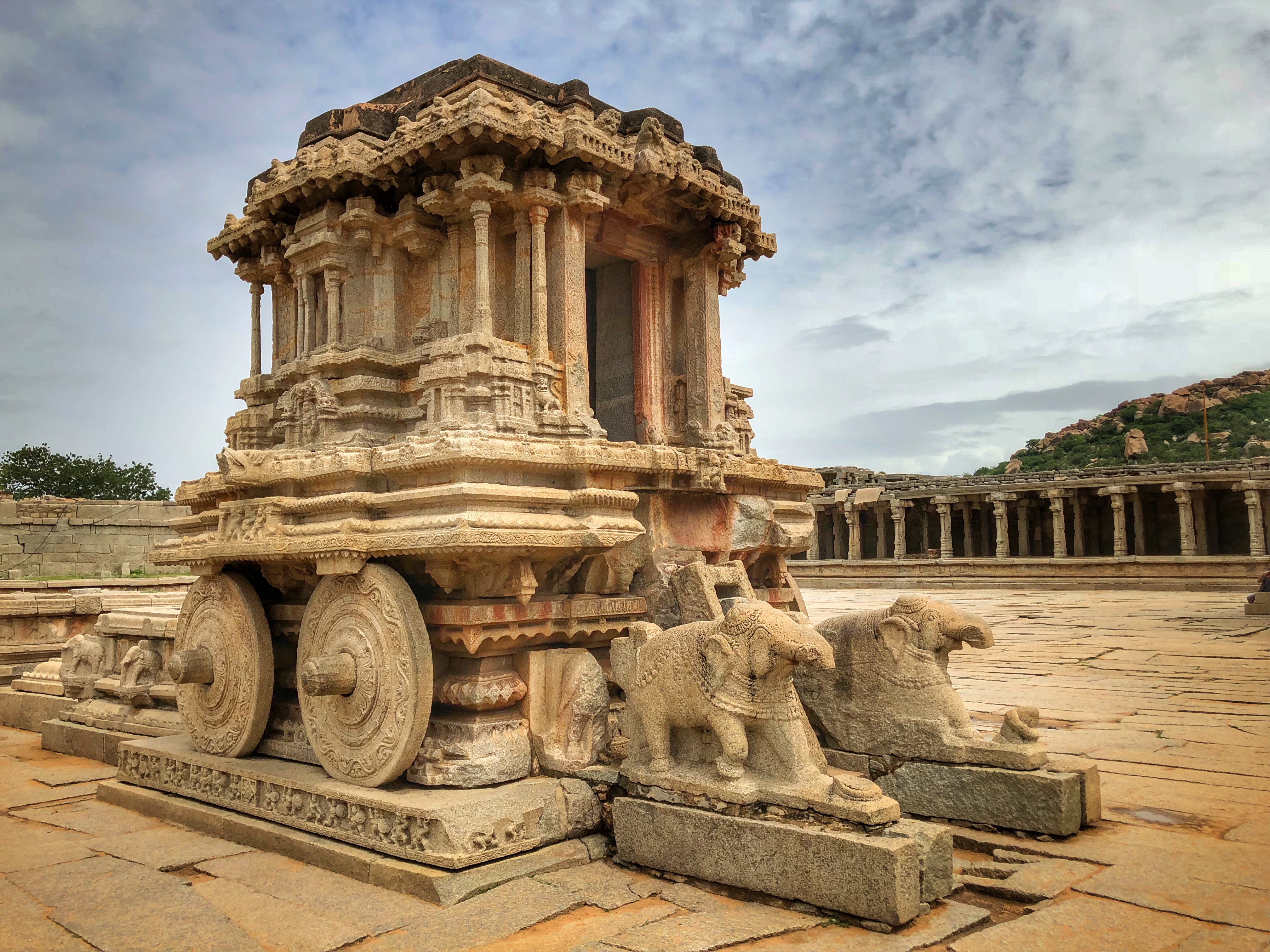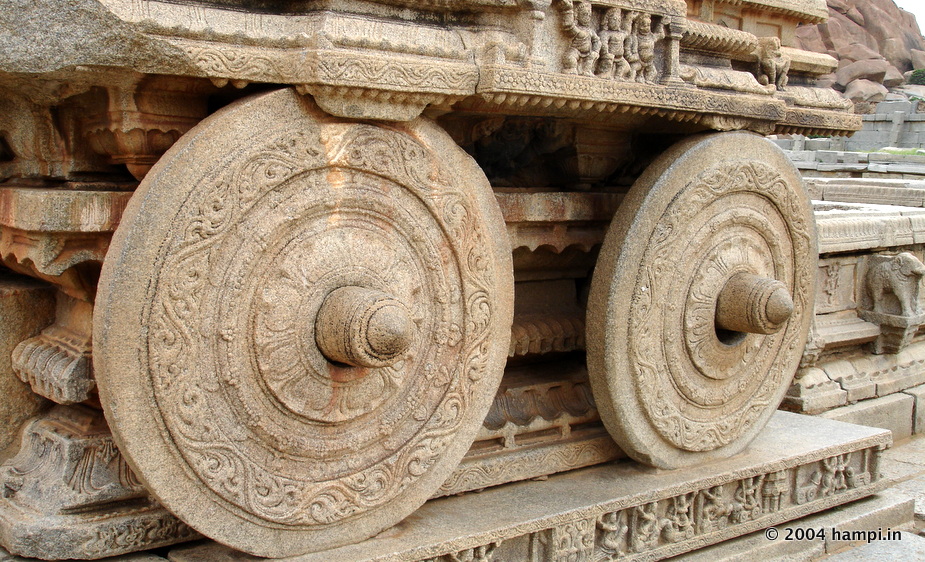The Hampi Stone Chariot: A Timeless Shrine to Garuda in the Heart of Vijayanagara
The Hampi Stone Chariot stands as a remarkable testament to the artistic brilliance and spiritual devotion of the Vijayanagara Empire in the 16th century. Built by the visionary King Krishnadevaraya, this stone chariot is not just a mere sculptural masterpiece, but a shrine dedicated to the revered deity Garuda. Nestled within the Vittala Temple Complex, this massive structure continues to captivate visitors with its intricate details, symbolic significance, and intriguing local beliefs.
The Vijayanagara Empire, flourishing in the Southern part of India during the 14th to 17th centuries, was known for its patronage of art, culture, and religion. King Krishnadevaraya, one of the empire’s most prominent rulers, played a pivotal role in fostering these aspects. Amid the grandeur of the Vittala Temple Complex, he commissioned the construction of the Hampi Stone Chariot, which would later become a hallmark of the empire’s architectural and spiritual heritage.
The Hampi Stone Chariot is a prime example of the intricate craftsmanship that characterized the Vijayanagara architectural style. Fashioned from a single massive block of granite, the chariot exudes a sense of awe-inspiring realism. The detailing on the chariot’s wheels, body, and other components showcases the artisans’ mastery over stone carving.
At the heart of this stone chariot lies its spiritual significance. The chariot is, in fact, a shrine dedicated to Garuda, a mythical bird-like creature in Hindu mythology and the vahana (mount) of Lord Vishnu. Originally, a larger-than-life sculpture of Garuda was positioned atop the chariot, symbolizing the deity’s divine presence and protective role. This depiction of Garuda on the chariot reinforces the spiritual importance of the monument.
The Hampi Stone Chariot holds a special place in the hearts of the local villagers and devotees. According to local folklore, there is a belief that the world will come to an end if the chariot ever moves from its current position. This intriguing belief reflects the chariot’s profound symbolic significance as a guardian and protector. The chariot’s stationary nature is seen as a safeguard against calamity, reinforcing its role as a divine sentinel.
One of the remarkable features of the Hampi Stone Chariot is its wheels. Shaped intricately like lotus petals, these wheels are not just ornamental but also functional. The wheels have the ability to revolve, a testament to the precision engineering employed by the artisans of that era. This unique characteristic adds an element of dynamism to the chariot’s stationary existence, symbolizing the cyclical nature of life and spirituality.
The Hampi Stone Chariot stands as a timeless embodiment of the Vijayanagara Empire’s artistic brilliance and spiritual devotion. Its dual identity as a sculptural masterpiece and a shrine to Garuda showcases the intertwining of art and religion in ancient Indian culture. As it continues to captivate visitors with its intricate details and symbolic depth, the chariot remains an indelible part of India’s rich heritage, reminding us of the deep connection between human creativity and divine reverence.
Hits: 6






